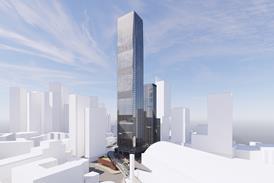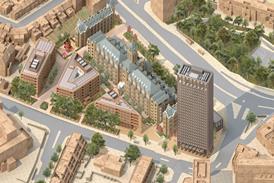- Home
 Grenfell refurbishment companies sued for more than £360m by council
Grenfell refurbishment companies sued for more than £360m by council Investors likely to be spooked by Trump tariffs in short term, London cost consultant Exigere warns
Investors likely to be spooked by Trump tariffs in short term, London cost consultant Exigere warns Manchester approves four towers including UK’s tallest outside London
Manchester approves four towers including UK’s tallest outside London Niall McLaughlin’s student resi scheme latest to be called in by London mayor
Niall McLaughlin’s student resi scheme latest to be called in by London mayor
- Intelligence for Architects
- Subscribe
- Jobs
- Events

2025 events calendar Explore now 
Keep up to date
Find out more
- Programmes
- CPD
- More from navigation items
Analysis: When will we see wooden skyscrapers?

Timber frames have begun to break into commercial and higher-rise uses thanks to technological breakthroughs. Ike Ijeh speaks to the pioneers
For more than 100 years steel and concrete have been the default structural frame materials for tall buildings. Accordingly, while western society has embraced wooden buildings across various typologies, the idea of a wooden high-rise or even mid-rise building has been something of an oxymoron; an impossibility from the realms of eco-extremism and fantasy fiction.
There are various reasons for this. Over hundreds of years a succession of devastating urban conflagrations, not least the Great Fire of London in 1666, have ensured that deep in the public consciousness the idea of using wood on a significant scale is inextricably linked with the threat of fire. And while wood does generate feelings of warmth, nature and domesticity, it is known to bend, warp and soften and is thereby routinely dismissed as structurally inferior to its sturdier inorganic counterparts.
…
This is premium content.
Only logged in subscribers have access to it.
Login or SUBSCRIBE to view this story

Existing subscriber? LOGIN
A subscription to Building Design will provide:
- Unlimited architecture news from around the UK
- Reviews of the latest buildings from all corners of the world
- Full access to all our online archives
- PLUS you will receive a digital copy of WA100 worth over £45.
Subscribe now for unlimited access.
Alternatively REGISTER for free access on selected stories and sign up for email alerts


